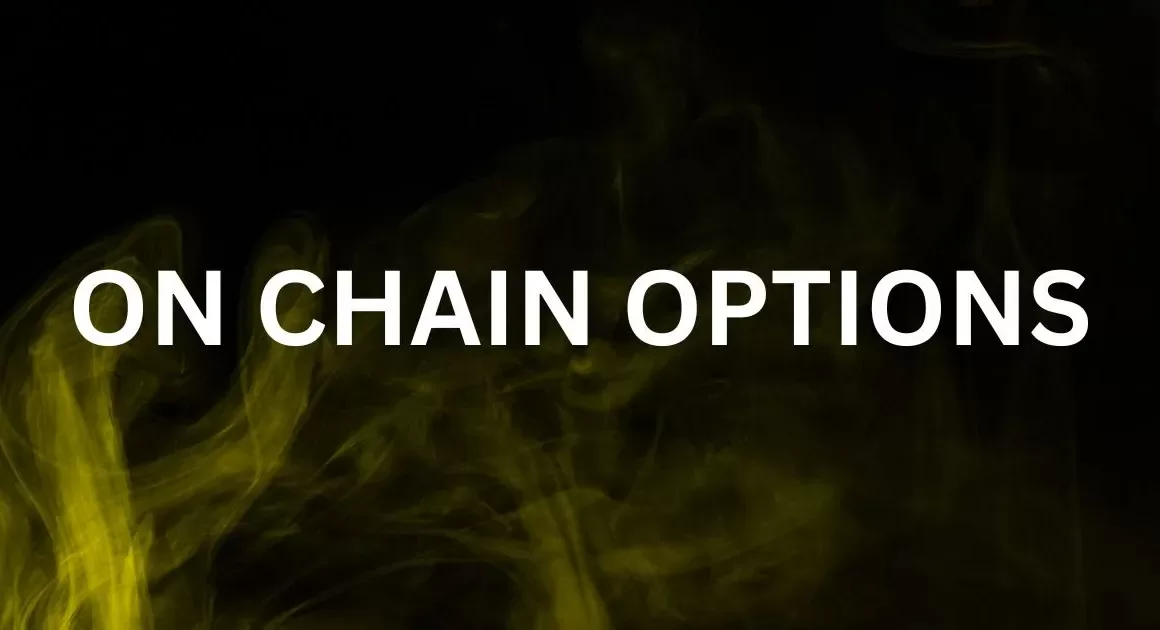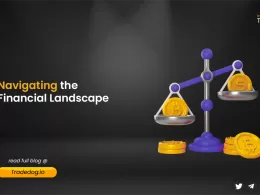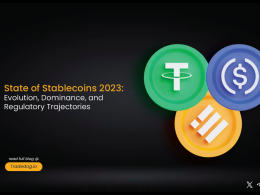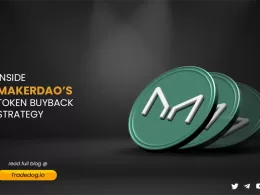Quick Links
Overview
The Derivative market is one of the expanding sectors in the cryptocurrency trading industry and options trading has been the leading volume chart in this derivative market. Just to give you a reference, the BTC option volume has increased by more than 100% from $5.8Bn in October 2020 to $12.78Bn in July 2022 with an all-time high of more than $35Bn at the peak of the Bull market in April of 2021.
If you see the above chart, almost more than 90% of the volume is concentrated in the single exchange that is Deribit. As per research published by Reflexivity Research, compared to just $400 million per day for crypto options, there is approximately $20 billion in daily OI for other derivatives such as perpetual swaps in cryptocurrency. This enormous gap suggests that there are limited options providing infrastructure for Bitcoin options trading which are currently accessible. Due to the difficulty in finding market makers who are ready to take this degree of risk for crypto options, therefore, Deribit too only offers options trading on three assets (BTC, ETH, and SOL).
Also, the year 2022 hasn’t been the year of centralized exchanges as even Deribit exchange also faced some exploits when their wallets were compromised. So for the next year, Research analysts at TradeDog are expecting a boom in the Decentralized Option protocols with a surge of TVL and volume on these exchanges.
On-Chain Options Landscape
Over the past 12 to 18 months, the landscape of DeFi Options has undergone a significant transformation. Hegic was the most popular options protocol at the beginning of 2020 when it attempted to build liquidity pools with the ability to sell put and call options. Today, we have several iterations of structured products, order books, the so-called Liquidity Pools (including AMMs), and their sub-group, which we called Sustainable Yield Products. There are at least a few live or in-development protocols for each category. The total TVL is around $1 billion, and the majority of it is available on Solana, Arbitrum, and Ethereum.
As per the above chart, the total value locked in the top 10 On chain protocols stands at ~$170Mn, protocols like Ribbon finance, Dopex, Opyn have done very well in the last year in terms of user adoption and retention. But, the major problem still faced by these protocols is the lack of market makers, the inability to accurately measure the price implied volatility, and the challenge of facilitating a high number of trades per second.
New emerging protocols like Panoptic and Gammaswap are coming with new technologies that are leveraging the vast liquidity and composability of Uniswap V3 LP positions to facilitate options payoffs, an entirely different subsector of on-chain options that could do very well in 2023.
Types of On-Chain protocols
Option AMM protocols:
Protocols like Hegic, Opium Network, HXRO, etc use the AMM model. Similar to the DEX AMM model, options automated market maker (AMM) allows traders to buy and sell options on cryptocurrencies against a pool of liquidity.
But first, let’s understand about different constituents of option AMM protocols:
- Liquidity Providers: LPs deposit stablecoins into one of the asset-specific Market Maker Vaults (MMVs). This liquidity is used to make two-sided (buy and sell) options markets for the asset that the vault specifies (e.g. ETH Market Maker Vault LPs quote options on ETH). LPs deposit liquidity to the vault to earn the fees paid when options are traded.
- Traders: Traders can either buy or sell options to the MMV. Traders pay fees (in the form of the market-making spread) to LPs, as compensation for their liquidity.
The base of option pricing AMM model is done using a similar model which is being used in the traditional space i.e Black Scholes model, which takes into consideration the five parameters i.e
– Asset price (S)
– Strike price (K)
– Risk-free interest rate ®
– Time to expiry (T)
– Implied volatility (sigma)
Structured Products/ Decentralized Option Vaults(DOV)
Protocols such as Ribbon Finance, Dopex, Theta Nuts, and others provide DOVs. These protocols enable users to sell volatility (i.e. underwrite covered calls or protected puts) for a premium, which some regard as an alternative to liquidity mining.
While ETH and BTC are the most popular underlying assets, offerings for AVAX, SOL, and other tail assets are also somewhat available. These Structured Products have amassed $600M in TVL during the strong market conditions, with Ribbon Finance being the leader which alone touched the TVL of $300Mn in April of 2022. It is worth noting that the majority of them employ the same off-chain market-makers to auction the options and hence the premiums they are offering. This is one of the major issues that these protocols face as they have to rely on Off-chain Market makers like Jump Crypto, QCP Capital, Genesis, CMS, etc to sell their positions which makes it very difficult to timely complete their cycles.
Recently, Ribbon Finance unveiled its new high-performance, order-book-based decentralized exchange i.e Aevo that comes with all the features necessary for a pro options trader. This includes a robust margin system (with portfolio margin), as well as hundreds of instruments to trade, including daily/weekly/monthly/quarterly options. All of this is built on a custom EVM rollup that is designed for scale and rolls up to Ethereum for security.
The 3 main advantages that Aevo offers users are:
- 100+ instruments, with many strikes and expiries
- Deep liquidity, by partnering with the best options trading firms(Centralized MMs) in the world
- Instant onboarding, deposit USDC from any EVM-chain
TradeDog, as a research hub, believes that these Structured products are one of the potential prospects in winning the race of On-chain Option markets due to their easy experience for the user and their hybrid model.
Perpetual Option Protocols
Similar to perpetual future contracts, a perpetual option is a non-standard option that can be exercised at any point in time without expiration. Protocols like Panoptic, AntiMatter, etc enable these perpetual option contracts without even relying on Oracles.
Instead of using a clearinghouse to settle options contracts, these protocols use Liquidity Provider (LP) positions in Uniswap v3 as a fundamental building block for trading long and short options.
The core idea behind Perpetual Options is that Uniswap v3 liquidity provider (LP) positions can be seen as tokenized short puts. This core result emerges from the simple observation that providing concentrated liquidity in Uniswap v3 generates a payoff that is mathematically identical to selling a put option, meaning that Uniswap v3 LP tokens can be used as a primitive for an option contract.
Main Participants in these protocol designs:-
– Liquidity Providers:- LPs provide liquidity to the options market. This liquidity will be lent out to the options traders to allow them to enable trading on leverage. Funds can be deposited in the liquidity pools at any ratio.
– Option Sellers:- OSs sell their options by borrowing liquidity for a fixed commission fee and relocating it to a Uniswap V3 pool. Sellers have to deposit collateral and can sell options with notional values close to five times larger than their collateral balance.
– Option Buyers:- Buyers buy options by moving liquidity out of the Unswap V3 pool back to that protocols smart contracts for a fixed commission fee. Buyers also have to deposit collateral (10% of the notional value of the option) to cover the potential premium to be paid to the sellers.
– Liquidators:- As every protocol works, liquidators ensure the health of the protocol by liquidating accounts whose collateral balance falls below the margin requirements. Liquidators will receive a bonus proportional to the number of funds necessary to cover the distressed positions.
These protocols provide a completely different approach that too completely relies on the Uniswap V3 model to facilitate the payoffs of the option, an entirely
the different subsectors of on-chain options that we believe could do very well in the coming years.
Conclusion
If we compare the options volume of Equity markets and crypto markets, there is a huge difference which shows the crypto options market is still in a very early stage and there is a massive opportunity to grab currently, most of the crypto options trading takes place on centralized exchanges with Deribit alone is leading the charts with a big difference. Ultimately, until now, options trading has failed to expand in the DeFi not because of the interest but the lack of infrastructure, and as it is rightly said: “If you build it, they will come”. This is a perfect quote to describe the potential for those looking to expand options infrastructure on-chain in the months to come. Also, as the year 2022 has not been the year for centralized crypto institutions, even the biggest of players completely got rekt, so, for the years to come, we believe that On chain options and the protocols working on it can be the next big thing in the DeFi and Crypto ecosystem.









